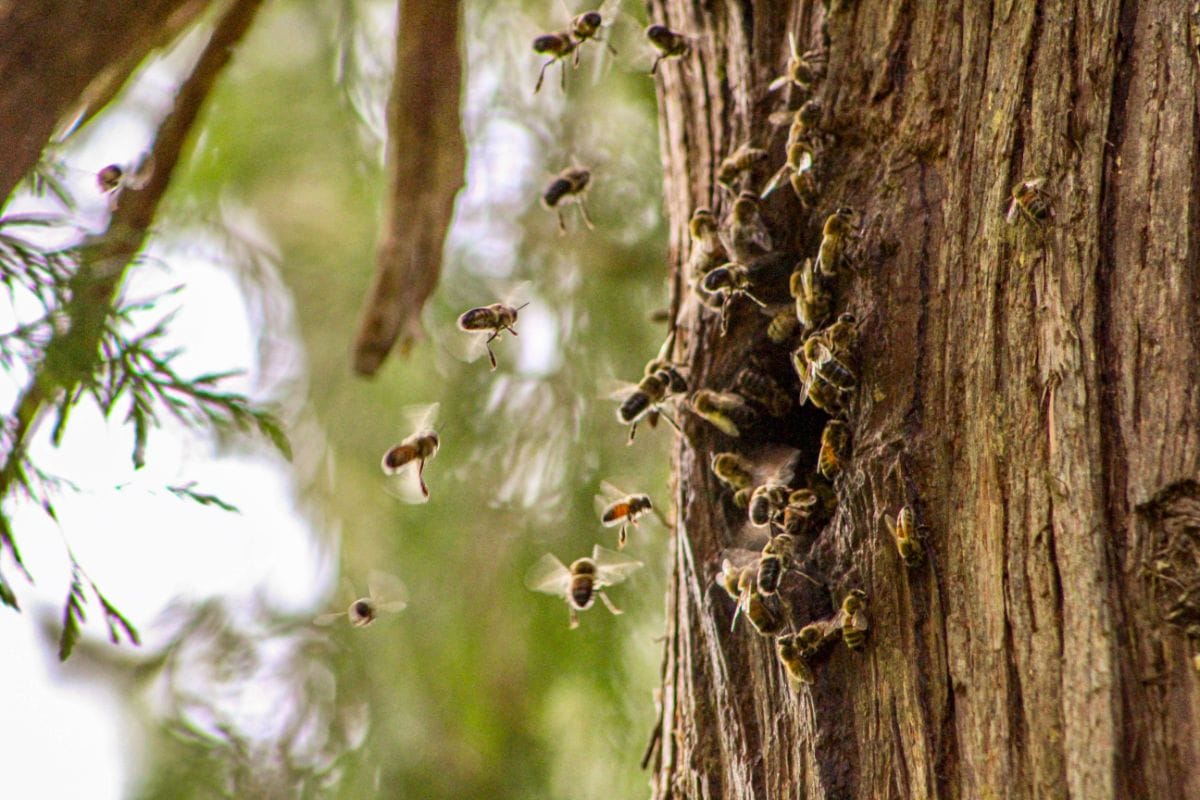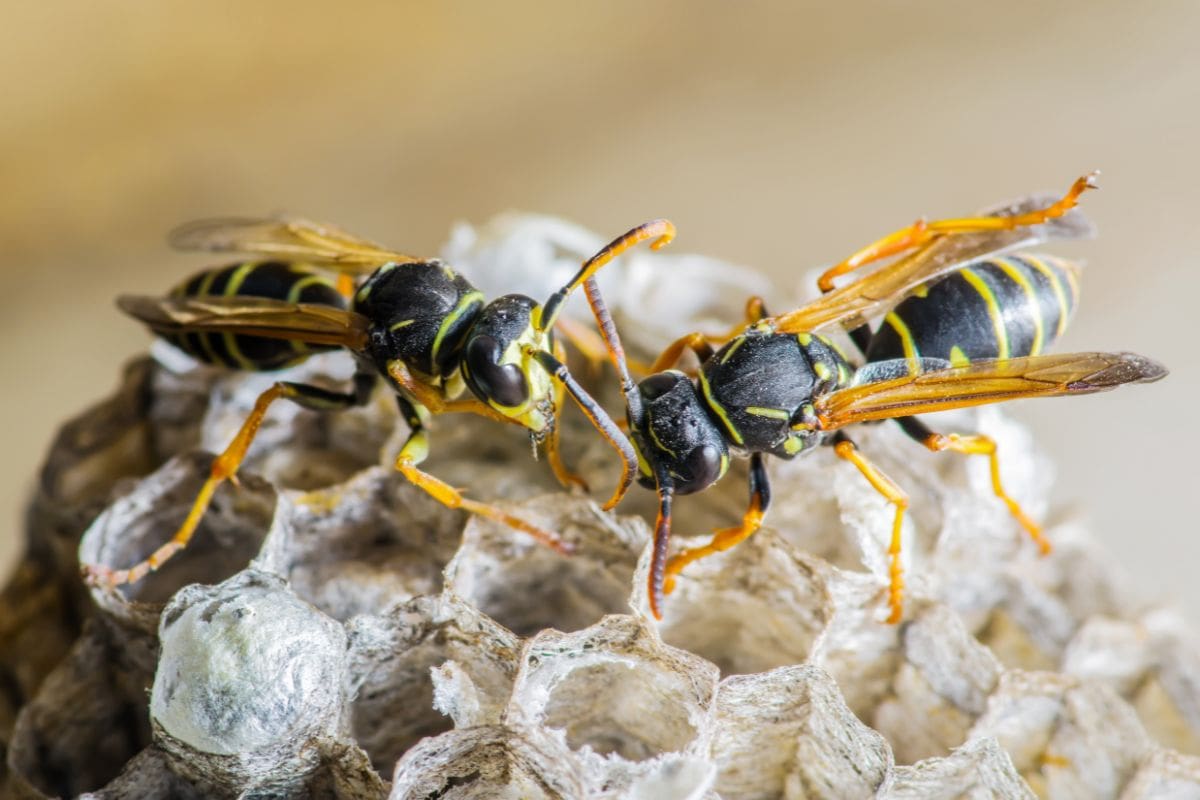When it comes to amazing names, you can’t beat the Fuzzy-Legged Leafcutter Bee. Even just reading this name might prompt you to take a deep dive into the physical and behavioral traits of this creature, or just have a gander at a photograph of it.
![Species Breakdown: Fuzzy-Legged Leafcutter Bee [Megachile Melanophaea]](https://beautifulbees.org/wp-content/uploads/2023/04/Species-Breakdown-Fuzzy-Legged-Leafcutter-Bee-Megachile-Melanophaea.jpg)
This type of bee can mainly be found in North America and there are a whopping 242 different species of them.
They often can be found emerging from hibernation during the spring, at which point they mate and die soon afterward (the males dying first, the females after laying eggs.)
But what are the other traits of this bee? How can you spot one in the wild? How many eggs do they lay?
What are their mating habits? Well, we have all the information on the Fuzzy-Legged Leafcutter Bee, so if you want to know more then let’s get reading!
What Do Fuzzy-Legged Leafcutter Bees Look Like?
As you can probably tell from the name, these bees come with very fuzzy legs! They look a lot like the classic honeybee, with a dark black head and yellow banding around the body.
They are also called leafcutters. Why? Because they cut leaves and take them back to their nests for the lining.
This means that they have very well-developed jaws, which they use to slice through the leaves.
They also have fuzzy bellies into which they gather pollen, unlike other bees who often collect pollen in sacks on their legs. The female has a very fuzzy belly for this specific purpose.
This is why fuzzy-legged leafcutters are some of the best pollinators in the bee kingdom. They can pollinate around 20 times more than your regular honeybee.
The male uses matted fur on the front of its legs to cover the female’s eyes when it is mating. Why they do this, experts are still uncertain.
The females are slightly larger than the males, although the males are far more colorful and have banding around their waists.
How Do Fuzzy-Legged Leafcutter Bees Build Their Nests?

These bees will often bore holes in wood into which they will lay their eggs. This wood usually comes from dead trees or rotting wood in general.
They use the leaves that they have cut with their laws to line the nest for protection. After the mating process has finished, the males will usually die.
This is when the female will go scouting for a suitable site in which to lay her eggs. She will make her own nest in which to lay her eggs.
Once she has laid them, she will provide them with what is called ‘bee loaves’. These are stores of pollen and nectar mixed in with her own saliva.
They have wonderful anti-bacterial and anti-fungal properties and will help the young to grow in the first few weeks.
These bees are quite solitary and will not build large nests or live in densely populated colonies. The female will often be in charge of raising her brood by herself, concentrating them into little family-style units.
There will be a lot of preparation before the female Fuzzy-Legged Leafcutter lays her eggs. They will spend a lot of time gathering pollen from the surrounding areas.
When they have gathered enough, they will then begin to lay the eggs within the nest. The young bee will then grow over the course of the next year before eating its way out and mating with other young bees during the next mating season.
How Do Fuzzy-Legged Leafcutter Bees Eat?

The Fuzzy-Legged Leafcutter will generally feed on pollen and nectar that it gathers from other plants in the vicinity. It will also gather these things and form them into packages that they will then leave for their young to feast on.
How Do Fuzzy-Legged Leafcutter Bees Behave?
These bees do possess stings in their tails, but will not really attack unless they are provoked. When it is used, the sting is not that aggressive and generally does not hurt any more than a honeybee sting.
These creatures are generally quite docile and will only really attack when they feel like their nest is threatened. They can mingle quite peacefully with other types of bees, although because of their size, they might often get attacked by more aggressive bees such as Africanized honeybees.
What Creatures Prey On The Fuzzy-Legged Leafcutter Bee?

There are a few different creatures that attack and try to eat leafcutter bees. One of the main predators is the Chrysidid wasp.
Usually, the wasp will wait until the leafcutter bee has left its nest and then lay her own eggs in the nesting cavity.
Once the wasp larva is attached to the bee larva, it will gradually consume the whole thing.
There are also intrusions by ants and earwigs that will often infiltrate the exposed nesting cavities of leafcutter bees.
Earwigs will also eat provisions that leafcutter bees have already gathered for their young.
Some breeds of spiders can be deadly to leafcutter bees, especially flying spiders that will often prey on foraging leafcutter bees.
If you have a bee house in your garden, then you might want to watch out for spider webs, as this could be a sign that they have designs on your bees.
There are also plenty of birds that will prey on these insects. Starlings, robins, woodpeckers and tanagers will all try and eat leafcutter bees.
If you see a row of birds perched near your bee house, then this might be a sign that they are ready to attack and eat any bee that comes across their path.
You can try and create a bubble or a wire mesh around your bee house, as this will be able to prevent the larger birds from getting to your bees.
Conclusion
We hope this guide to Fuzzy-Legged Leafcutter Bees has given you plenty of information on how to spot these them in the wild, how to monitor their behavior as well as how to protect them from predators.
- Does Bleach Kill Bees? - April 23, 2024
- How Do I Get Rid of Ants Without Harming Bees? - April 16, 2024
- Do Bug Zappers Kill Bees? Completely Explained - April 9, 2024
